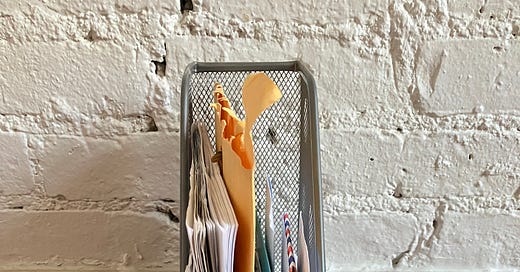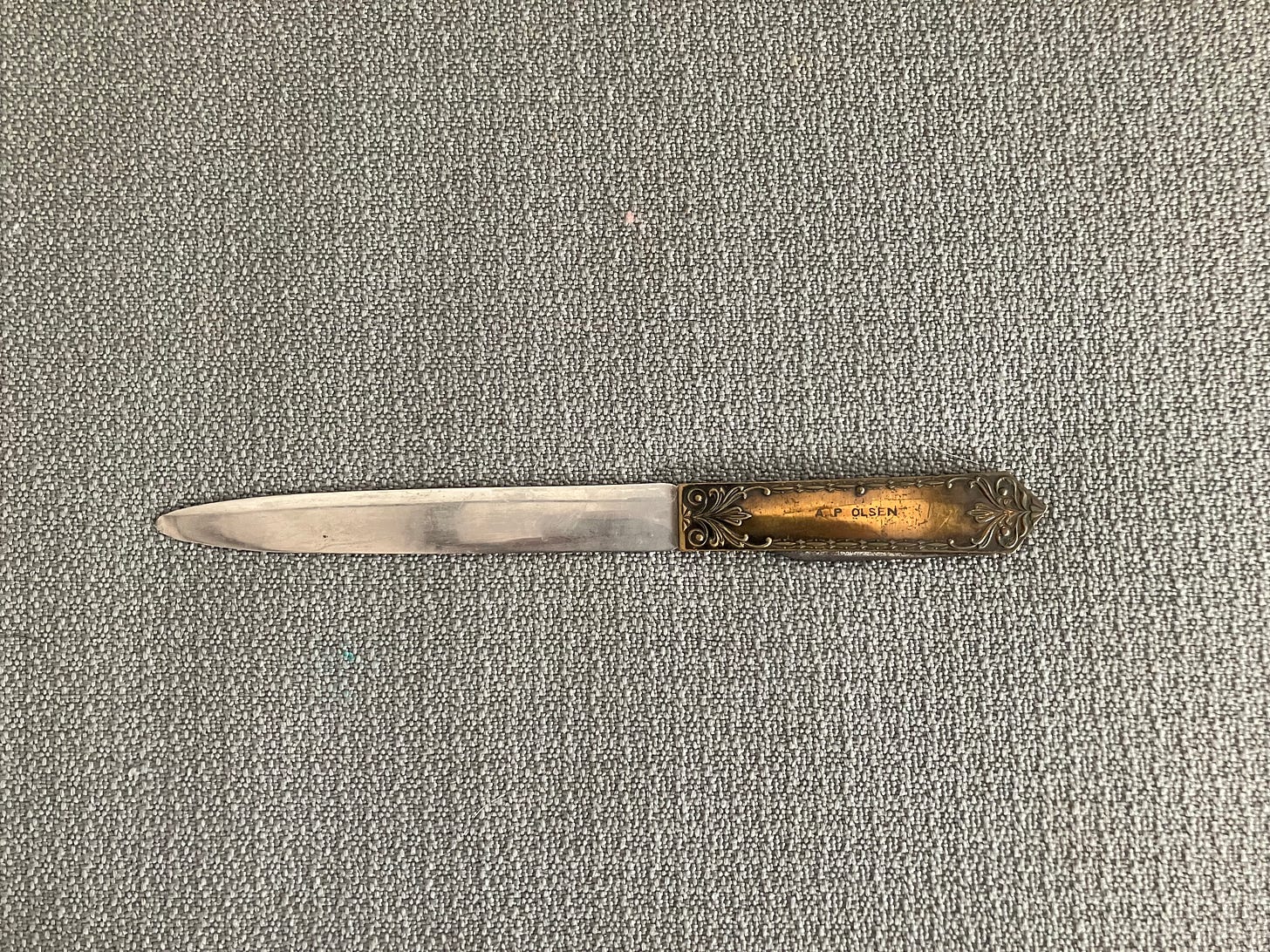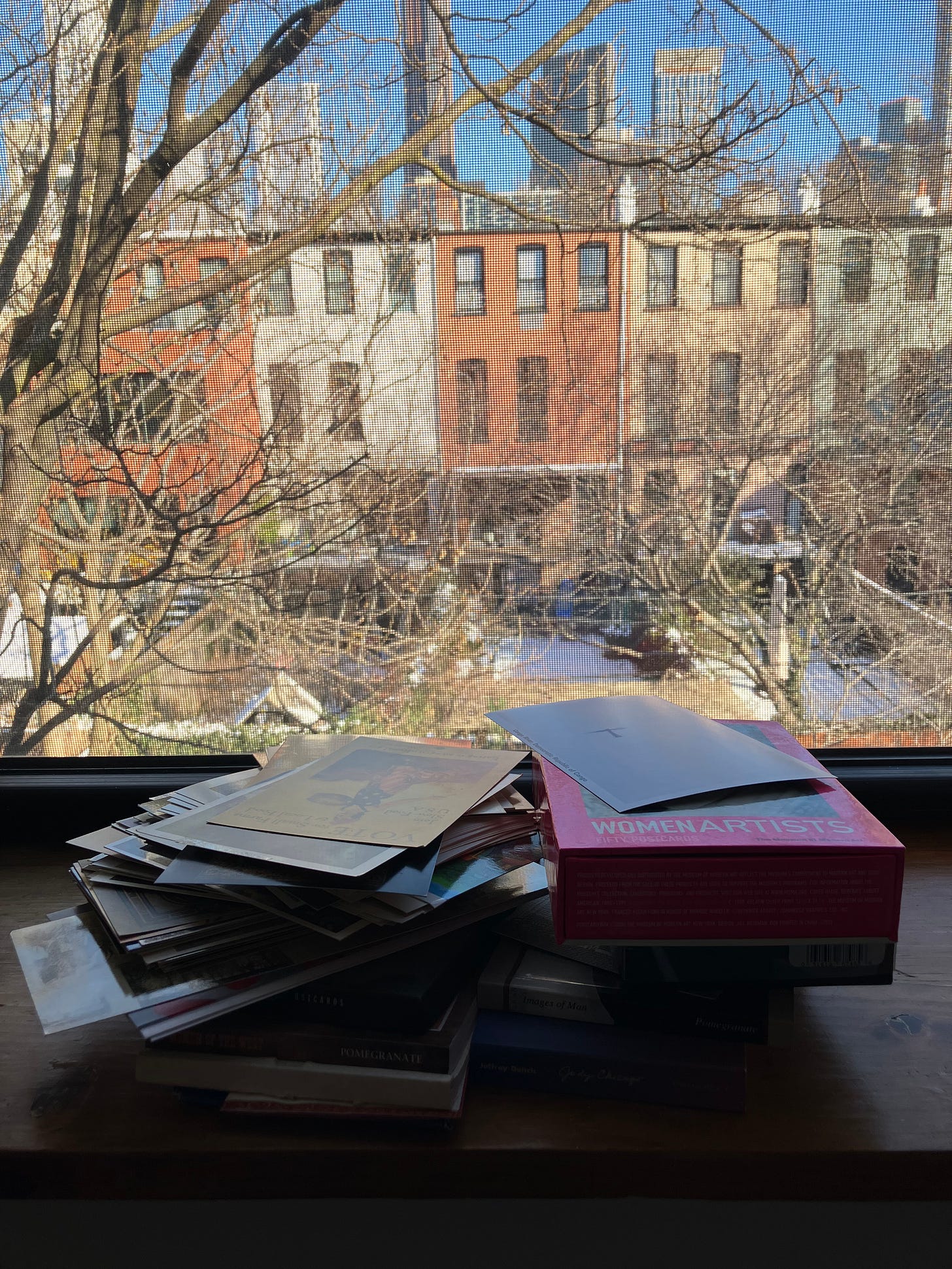30 cards and letters (some handwritten, some typed), a collage of images from one sister and a book of memories from the other. Altogether, it’s an archive of about 3 linear inches.
What did I want for my 60th birthday? Not more things. I had too many already, especially since I was living away from home, displaced by a long renovation. Get togethers were hard from afar. Dinners in fancy restaurants made me anxious. I had close friends and even closer family, but I was hundreds of miles from most of them. I wanted connection.
So I sent an email to my forty-some nearest and dearest, asking them to send me letters. There was no prompt, though I’ve been a professional writing teacher and could easily have included one. “Happy birthday” on a Hallmark card was fine, as were thoughts on turning 60 or reminiscences. I preferred them handwritten, but there was only one requirement: it had to arrive by mail.
I am a writer and a reader–but more specifically, I am a biographer and memoirist. That means I work with letters–in institutional archives, usually, but since I began a memoir about my father’s art career I’ve also assembled and interpreted family letters. I call those my Shoebox Collection. I’ve found my father’s letters home from a post-war European tour in the early 1950s, on the stationery of a stately home. I’ve found and printed out my mother’s long chatty emails to her three daughters, before she began losing her memory. I’ve deciphered nineteenth-century handwriting (crossed over to save paper) and scrolled through microfilm reels, as the tape ends flapped noisily in a public library.
In college I too sent and received letters to friends abroad on onion skin paper, in those old blue-trimmed envelopes. (Remember when long distance calls were an extravagance?) Since the email revolution of the 1990s, though, I only rarely received personal letters in the mail. I wanted the delight of a surprise arrival by post, the personality of handwriting, the suspense of unfolding the pages.
As I drafted this, a sparkly pencil appeared in the margin of my Google doc. It was my “AI Assistant,” offering to “Help me write.” One morning last month it offered to reply to an email to me entitled “Re: Christmas Wishlists”: “Hi Mom,” it began, though it was from my sister. Then I could ask it to “Acknowledge. Suggest gifts,” “Request details,” or “Confirm and share wishlist.” I ignored it and replied manually (!) and it continued to make suggestions like “Agree to track gifts” or “Create gift tracker.” Is this helping or hindering connection?
As a lark, I asked AI to write this essay for me. It required a prompt, so I suggested write an essay about my birthday letters project. Its answer assumed I was the one writing the letters and created a whole practice for me: one letter every year on my birthday to someone important to me. It imagined a website, where I was now publishing and sharing the letters–to great acclaim!! It used the word “tapestry” in both the first and last sentences (it wanted “tapestry” in the essay title too). It gave me no way to highlight or differentiate the AI-generated text from my own words, as I do here with italics.
In the tapestry of life, there are countless threads that intertwine, creating the intricate patterns of our existence. For me, one such thread has been my “Birthday Letters” project—a labor of love that began as a personal endeavor but has since evolved into something far more profound.
It was long. There were three paragraphs here that I cut out. Then,
The response to the project was overwhelming. People from all walks of life reached out to me, sharing their own stories and experiences. Some wrote to express their gratitude for the letters, while others found solace and comfort in the words I had written. The project became a platform for dialogue, connection, and mutual understanding.
Through the “Birthday Letters” project, I have come to realize the immense power of storytelling and the human need for connection. The letters have not only deepened my relationships with others but have also given me a sense of purpose and meaning in my own life.
Despite its cheesy language, the AI engine anticipated that the piece would be about the “human need for connection.” That smarted. AI has learned enough about us to know that much. Us, not me. It had made me, and my own human connections, into a generic abstraction. Is our humanity the most clichéd thing about us? AI would know.
In fact, it’s not easy to generalize the takeaways from my real-life Birthday Letters project. The responses were various and diverse. As I had hoped (but not required!), they were more about them, the people I loved, than about me. Some letters trickled in months later. I replied to every letter by hand, spacing them out to coincide with some people’s birthdays, so it was also a year-long effort for me. My responses were not deep. They reflected a moment, as I supposed their letters had. I wrote my last response last month1: to my younger (adult) progeny2, born in January, who had given me a handwritten letter “from SPAWN” with a hand-drawn stamp on the corner of the envelope. They had squeezed more than 25 words into each of 50 fine-ruled lines on one large page of paper. That’s some thousand tiny words. They used white-out to fix mistakes and began ironically, with the pretense that we hadn’t seen each other in years, though we were living in the same house at the time of my birthday. “I don’t know if I can keep up that joke (?) much longer…,” they wrote. “So instead of trying to resq rescue it. Yes, I did almost spell “rescue” with a “q,” SO WHAT?!....” That letter was not mailed but handed to me before my birthday lasagna. Some takeaways: Humans are funny. Humans cross things out. Humans break rules.
That rauq raucous, inimitable voice, each unique connection. That’s what I wanted for my birthday.
Resources:
Here’s another bit about letter-writing, though online. I subscribe to Nick Cave’s The Red Hand Files, in which the musician answers random questions from readers. He once asked them a question back (“where and how do you find joy?”) and compiled the answers onto a web page. Whenever you need some inspiration and optimism, go browse that infinitely scrolling page.
Finally, I will mail a random postcard from this pile of travel and museum memorabilia to anyone who replies to this email or DMs me in the app with their physical address3. I’m still cultivating surprise and randomness however I can! (and making sure my handwriting stays legible with practice.)
Do you still send or receive any correspondence by mail? (Correspondence! What a well-weighted word that is.) I suppose the pen pals and chain letters of my youth are long gone. I was never a great participant in the Christmas letter, but it does serve this purpose. Share your thoughts in the comments and share this post with anyone who might enjoy it. Thanks for being here! This, too, is a letter to each of you.
I would say something about my response but I hand-wrote it on Japanese stationery and didn’t keep a copy. On purpose.
There is no word that I know of for non-binary adult offspring. Thus this circumlocution. First I wrote “my younger child” but said child said that sounded like they were eleven years old so I tried again. They gave me permission to quote their letter, by the way. Thanks, you!
I am not harvesting addresses this way! I won’t keep it or do anything else with it. Promise. Please do only provide the address by email (not in the comments) to protect your own privacy.







Handwritten letters are a rarity and a treat, these days. I've got some of my mum's letters that she wrote to her parents when my siblings and I were tots, describing family life before I can remember it. (She found them when she was clearing her parents' house after they died and I found them when I was clearing my parents' house.) I love those insights gleaned from physical letters.
You have inspired me, Victoria! Actually, this post is the fourth nudge in as many weeks toward letter writing, and the one that pushed me over 😉 what a delightful idea and so meaningful at this time in history when all correspondence is instant and lost to history. Thanks!